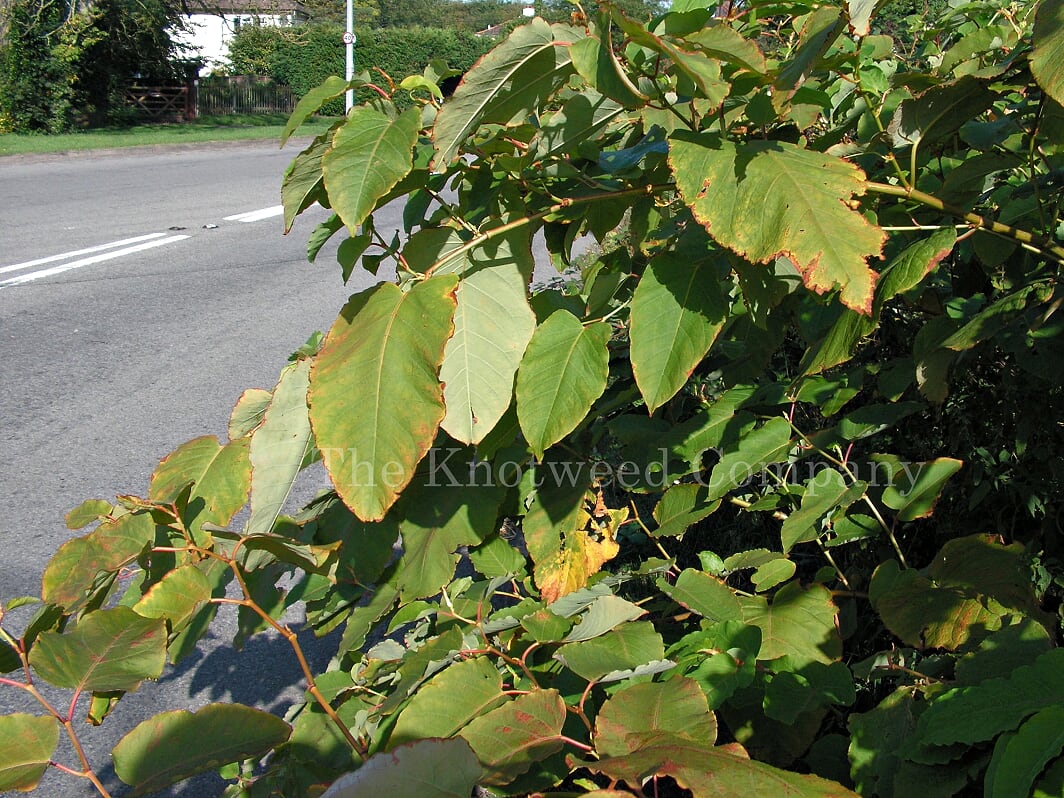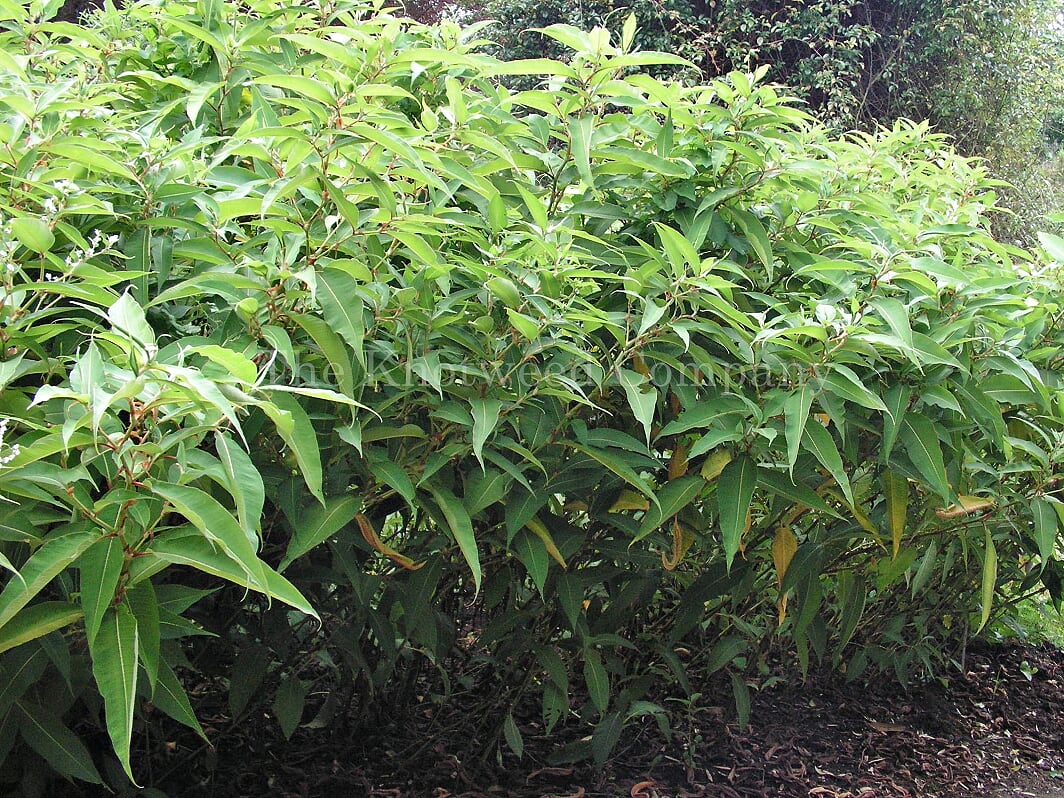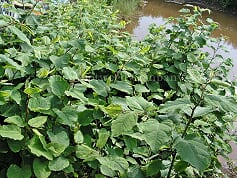There are several species of knotweed in the UK in addition to Japanese knotweed. Four of the most prevalent are giant knotweed (Reynoutria sachalinensis, formally Fallopia sachalinensis), Himalayan knotweed (Persicaria wallichii), dwarf Japanese knotweed (Reynoutria japonica var. ‘Compacta’, formally Fallopia japonica var. ‘Compacta’) and the less problematic lesser knotweed (Persicaria campanulata). Also there are several hybrid (or cross breed) species. Most are either rare in the UK or short-lived (or both). Fallopia x conollyana is a hybrid produced by the interaction between Russian Vine (Fallopia baldschuanica, a.k.a. ‘Mile a Minute’) and Japanese knotweed, though it is rare and lacks any of the invasiveness of its parent plants. The most significant knotweed hybrid is Reynoutria japonica x bohemica (formally Fallopia japonica x bohemica and also known as ‘Bohemian knotweed’ or simply ‘Hybrid knotweed’), formed by the interaction between Japanese and either giant or dwarf knotweeds. This form of knotweed is strong, increasing in number and has shown more resistance to herbicides than Japanese knotweed. As such it presents the greatest issue amongst the hybrids.






